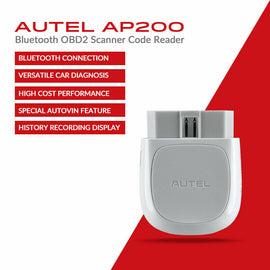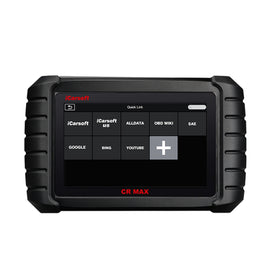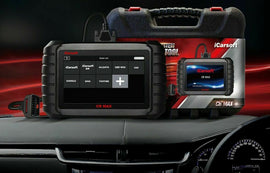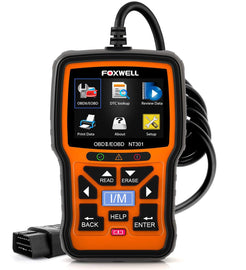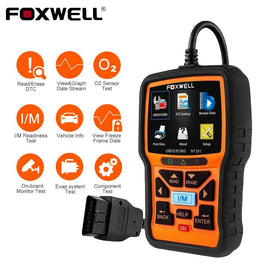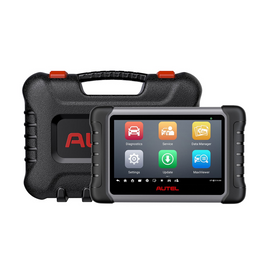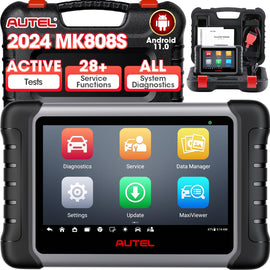Whether you're restoring a classic ride or simply dislike relying on a mechanic for every warning light, having control over your car's health matters. DIY car care is more than a hobby—it’s peace of mind.
For this purpose, a reliable and accurate diagnostic tool is required to identify and fix issues with your car quickly.
One of the most popular and useful pieces of equipment for this is an OBD2 diagnostic scan tool.
However, selecting the best scanner for your specific needs can be challenging with the numerous models and features available.
But in this article, you can find the features your OBD2 tool should have.
Types of Car Diagnostic Tools
Let's start by getting familiar with the various kinds of diagnostic tools that are available. The most popular is an OBD-2 scanner, which reads fault codes from the computer by connecting directly to your car's OBD-2 connection.
Basic versions of these tools only show the code; more sophisticated versions offer comprehensive diagnostics and even suggest possible fixes.
Another option is a handheld diagnostic tool, which offers a wider range of tests and a more comprehensive analysis.
If you are serious about car care, you might want to invest in these best car diagnostic scan tools, which are often used by professionals.
The newest option is mobile app-based tools, which pair a smartphone app with a tiny hardware device.
For people who prefer technology-based solutions, these are very easy to use.
Lastly, manufacturer-specific tools are ideal for brand loyalists or individuals with unique vehicles, as they provide more thorough diagnostics tailored to specific car brands.
What Features to Look for in an OBD2 Tool
When you are buying the OBD2 scanner for car owners, know the features you must have. Here are some of the top features your scanner should have:
-
Ease of Use
Even if you are not an experienced mechanic, the best OBD2 scanner for you should be easy to use. Seek out automotive diagnostic tools with an easy-to-use interface that doesn't require a manual to comprehend. Simple navigation, straightforward buttons, and an intuitive display can make the process go more smoothly for you.
The task is made easier by a simple panel with large text and unambiguous symbols. You don't want to waste time navigating complex menus if you're trying to diagnose issues quickly.
-
ABS System Diagnostics
The Anti-lock Braking System (ABS) is an important safety component in modern vehicles. The FX2000's ability to read and clear ABS codes, as well as diagnose component issues, makes it a vital tool for ensuring the braking system's reliability and safety.
-
Transmission Diagnostics
Resolving transmission issues can be expensive and challenging. The advanced diagnostics of the FX2000 provide insight into the condition of the transmission system.
To diagnose and fix transmission problems, it enables users to view live data and read and clear fault codes.
-
Freeze Frame Data
In order to record the instant an issue occurs, freeze frame data is essential. Freeze frame data records the precise vehicle parameters at the moment of the malfunction, including temperature, RPM, and speed, in the event that your check engine light illuminates and you are unable to replicate the problem.
You can access this information with a good diagnostic scan tool for Australian cars, which will help you identify issues that don't happen often.
-
Storage and Data Logging
A professional OBD-2 vehicle diagnostic tool saves the scan data for later use.
This information is necessary to investigate the vehicle's historical performance and spot trends.
-
User-Friendly Interface
Large touchscreens, straightforward menus, and easy-to-follow instructions are all characteristics of the best scan tools, making use quicker and easier while reducing errors and saving time.
In busy shops where efficiency is crucial, even powerful tools are ineffective unless their interface is both user-friendly and intuitive.
-
Software Upgrading Facility
Software is necessary for the best OBD2 scanner for DIY mechanics to operate correctly. Verify the software version and the year it was last updated if your device has built-in software. To avoid having an outdated device, ensure that the device allows you to update its software and provides additional support mechanisms.
How to Use an OBD2 Scanner?
Operating an OBD 2 scanner is not a difficult operation. After following a few instructions, you will be ready to use the gadget. It does not require any special mechanical knowledge to install.
Here are a few basic steps to take to install it in your vehicle:
-
Locate the Diagnostic Link Connector (DLC)
-
Connect the OBD 2 Scanner
-
Establish Communication with Vehicle
-
Input Vehicle Information
-
Initiate Trouble Code Search
-
Access Trouble Codes Menu
-
Select and Scan Vehicle Systems
Conclusion
Selecting the right OBD2 tool can significantly enhance your car maintenance experience, especially if you're a hands-on car owner. With the right features—such as ease of use, ABS and transmission diagnostics, data logging, and software updates—you can diagnose issues quickly and accurately.
Whether you’re just starting or building a solid toolkit, investing in the right device pays off. At Autolines Australia, we make it simple to buy an OBD2 diagnostic tool online with expert support and a wide range of trusted brands.
Explore our collection today and make car care smarter, faster, and more reliable.


